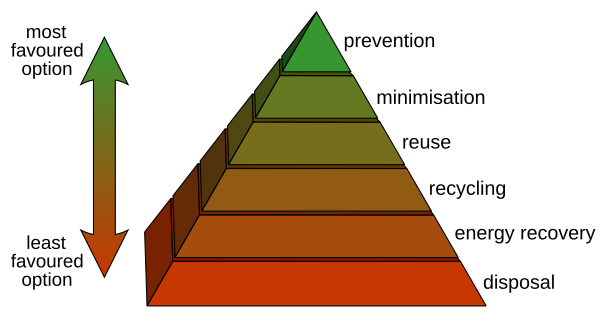WHY PACKAGING?
It’s hard to visit a landfill site without being struck by the craziness of taking very valuable minerals and resources out of the ground, using a lot of energy, turning them into short life products and then just dumping them back into the ground. It’s an absolutely monumental waste of energy and resources. As someone from the fashion industry might say, it’s just so last century. (Michael Pawlyn, The Guardian, November 21 2005)
Whilst some packaging is necessary in our modern industrialised food chain, unnecessary packaging is a waste:
Cost: It increases the price of the goods you buy. You are charged twice – first when you buy overpackaged products and then through your council tax for disposing of your rubbish & recycling.
Waste: It wastes resources at every level: production, storage, transport and disposal.
Pollution: Landfill and incineration are the two main ways of dealing with un-recyclable packaging waste. These are major pollutants for people, and the environment, as they leach toxins and release greenhouse gases. The unpalatable truth is that we’re running out of landfill space – we will reach a time that the landfill holes in the ground are full with little mainstream impetus to find alternatives.
What about recycling? While some packaging is recycled, most ends up in landfill sites and some is too complex to recycle as the facilities don’t exist, or aren’t cost effective. Recycling is part of the solution, but only if we use it as a stepping stone to a zero waste circular economy where we use less packaging and develop systems based on re-use & refilling.
Follow the principles of the Waste Hierarchy and
Reduce by only buying what you need
Reuse by bringing your containers for a refill
Recycle what you can’t reuse
And… if you can’t reuse or recycle it then don’t buy it!
After reading through this, a lot of it was what I discussed within my dissertation, to do with the waste and pollution. I also like how they have translated this information into how it benefits the consumer as well as the planet. However, the Waste Hierachy is something that I have never heard of before. So I looked a bit more into what it is.
WASTE HIERACHY
The evaluation of processes that protect the environment alongside resource and energy consumption to most favourable to least favourable actions. The hierarchy establishes preferred program priorities based on sustainability. To be sustainable, waste management cannot be solved only with technical end-of-pipe solutions and an integrated approach is necessary.
The waste management hierarchy indicates an order of preference for action to reduce and manage waste, and is usually presented diagrammatically in the form of a pyramid. The hierarchy captures the progression of a material or product through successive stages of waste management, and represents the latter part of the life-cycle for each product.
The aim of the waste hierarchy is to extract the maximum practical benefits from products and to generate the minimum amount of waste. The proper application of the waste hierarchy can have several benefits. It can help prevent emissions of greenhouse gases, reduces pollutants, save energy, conserves resources, create jobs and stimulate the development of green technologies.
Here is an example of a waste hierachy pyramid, with the most favoured options for the environment being at the top and the least favoured options being at the bottom.
I also found some more compelling facts about packaging and recycling in the UK (by Unpackaged again):
In general, I think the Unpackaged store in Hackney is a perfect role model of sorts to other prospective stores.



No comments:
Post a Comment